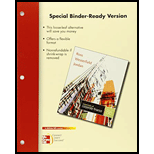
a)
Case synopsis:
Company S is a real estate firm, whose CEO (chief executive officer) is Person R. The firm buys real estate and rents it to tenants. The firm has shown profit for each year. Before the foundation of Company S, Person R was the founder and CEO of Company A, which is a farming operation. Company A was a failure firm, which ended up with bankruptcy. This situation made Person R to be extremely averse towards debt financing.
Hence, the company is completely financed through equity. Company S is assessing a plan to buy a huge tract of land, which would be leased to the tenant farmers. This purchase is predicted to raise the annual earnings before tax in perpetuity. Person J is the new CFO (Chief financial officer) of Company S, who found the present capital cost of the company.
Person J felt that the company will be very valuable, if it adds debt in its capital structure. While evaluating whether the company could issue debt to completely finance the project, she found that it can issue bonds at a par value with coupon rate. She found an optimal range of capital structure between 70% equity and 30% debt.
Characters in the case:
- Company S
- Company A
- Person R
- Person J
Adequate information:
- If Company S moves beyond the 30% debt, the bonds issued by the company will have a lower rating and a greater coupon as the possibility of financial distress and the associated cost increases.
- Company S also has a corporate rate of tax.
To compute: The market value if Company S financed the purchase with debt.
b)
Case synopsis:
Company S is a real estate firm, whose CEO (chief executive officer) is Person R. The firm buys real estate and rents it to tenants. The firm has shown profit for each year. Before the foundation of Company S, Person R was the founder and CEO of Company A, which is a farming operation. Company A was a failure firm, which ended up with bankruptcy. This situation made Person R to be extremely averse towards debt financing.
Hence, the company is completely financed through equity. Company S is assessing a plan to buy a huge tract of land, which would be leased to the tenant farmers. This purchase is predicted to raise the annual earnings before tax in perpetuity. Person J is the new CFO (Chief financial officer) of Company S, who found the present capital cost of the company.
Person J felt that the company will be very valuable, if it adds debt in its capital structure. While evaluating whether the company could issue debt to completely finance the project, she found that it can issue bonds at a par value with coupon rate. She found an optimal range of capital structure between 70% equity and 30% debt.
Characters in the case:
- Company S
- Company A
- Person R
- Person J
Adequate information:
- If Company S moves beyond the 30% debt, the bonds issued by the company will have a lower rating and a greater coupon as the possibility of financial distress and the associated cost increases.
- Company S also has a corporate rate of tax.
To construct: The
Want to see the full answer?
Check out a sample textbook solution
Chapter 13 Solutions
ESSENTIAL OF CORP FINANCE W/CONNECT
- Muskoka Tourism has announced a rights offer to raise $30 million for a new magazine, titled ‘Discover Muskoka’. The magazine will review potential articles after the author pays a nonrefundable reviewing fee of $5,000 per page. The stock currently sells for $52 per share and there are 3.9 million shares outstanding.arrow_forwardSs stores probarrow_forwardHenrietta’s Pine Bakery Corporation would like to raise $75 million to finance its expansion into new markets. The company will sell new shares of equity via a general cash offering to raise the needed funds. If the offer price is $15 per share and the company’s underwriters charge a 6% spread, how many shares need to be sold?arrow_forward
 Financial Accounting: The Impact on Decision Make...AccountingISBN:9781305654174Author:Gary A. Porter, Curtis L. NortonPublisher:Cengage Learning
Financial Accounting: The Impact on Decision Make...AccountingISBN:9781305654174Author:Gary A. Porter, Curtis L. NortonPublisher:Cengage Learning Intermediate Financial Management (MindTap Course...FinanceISBN:9781337395083Author:Eugene F. Brigham, Phillip R. DavesPublisher:Cengage Learning
Intermediate Financial Management (MindTap Course...FinanceISBN:9781337395083Author:Eugene F. Brigham, Phillip R. DavesPublisher:Cengage Learning





